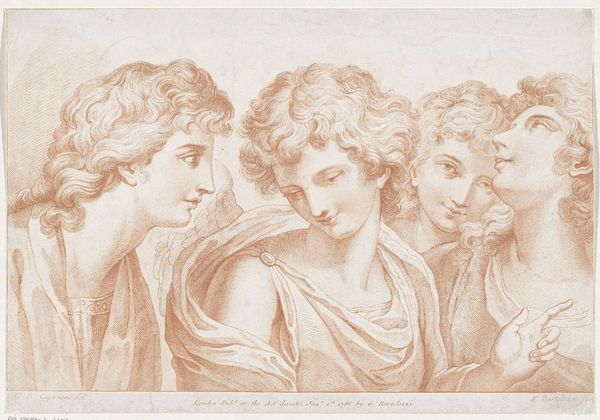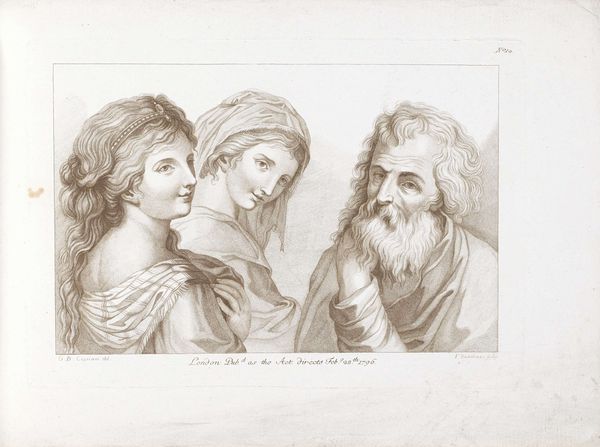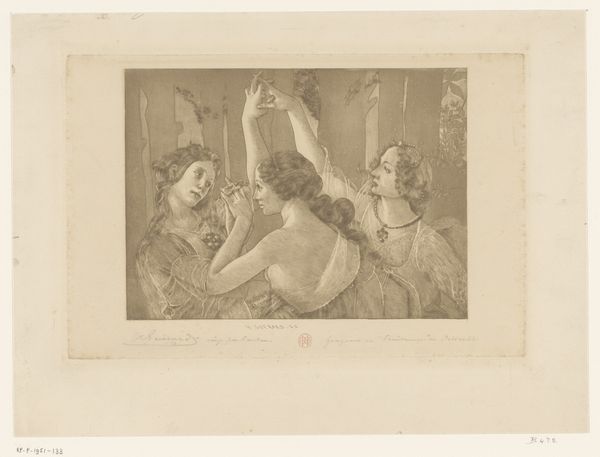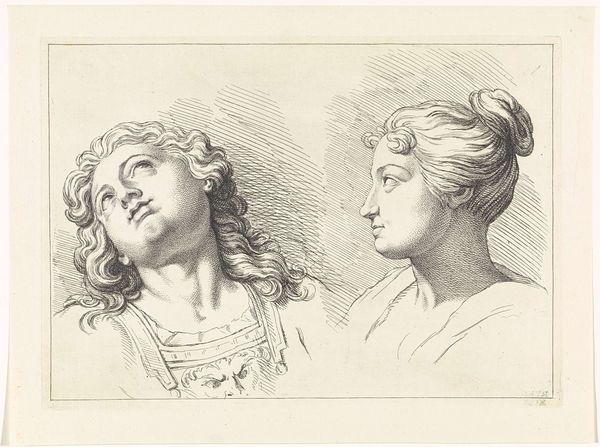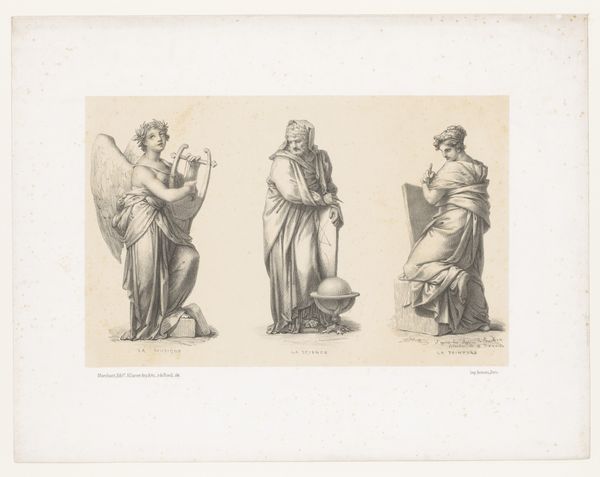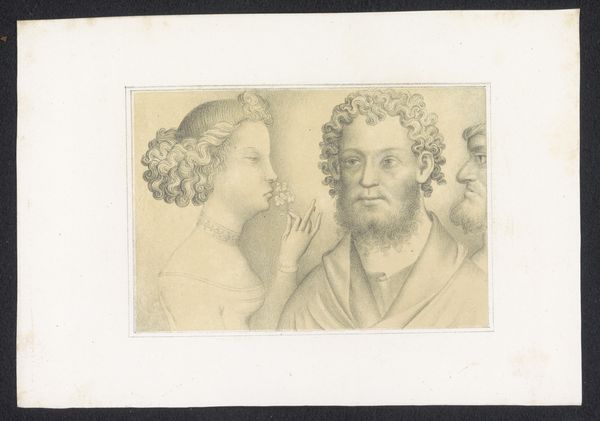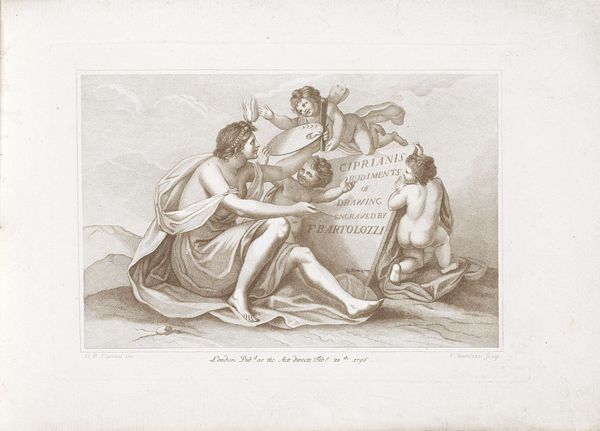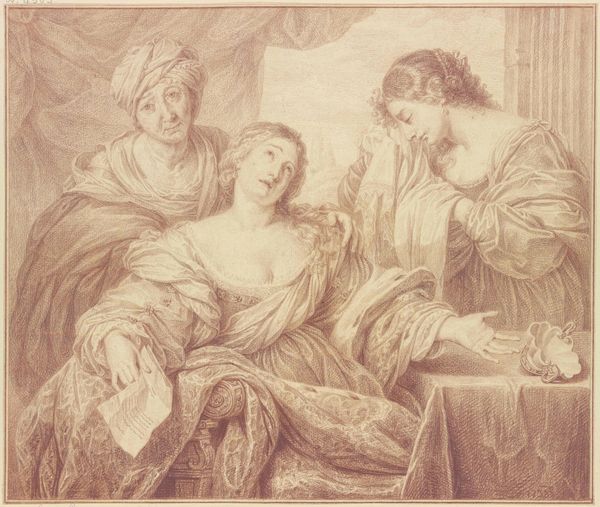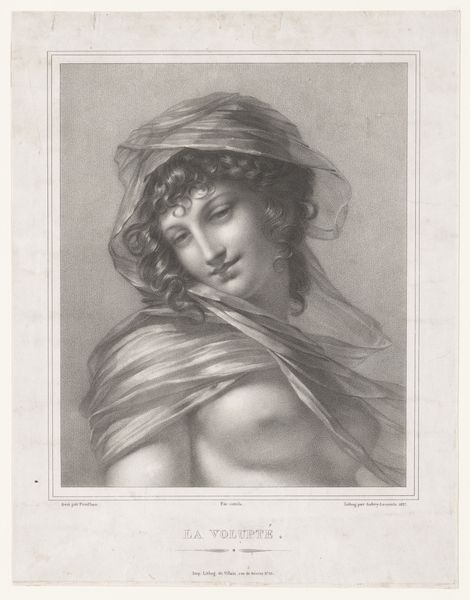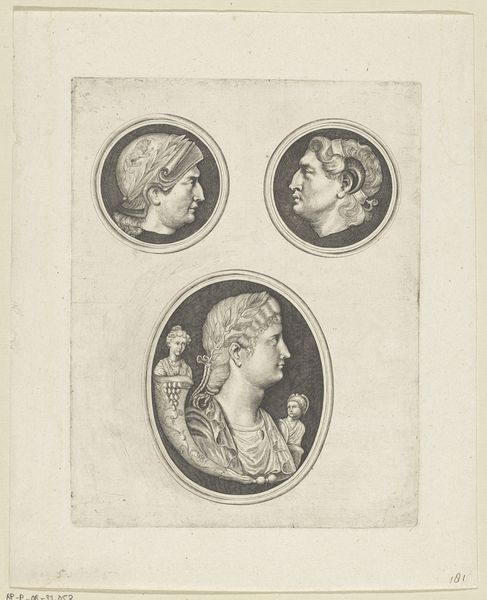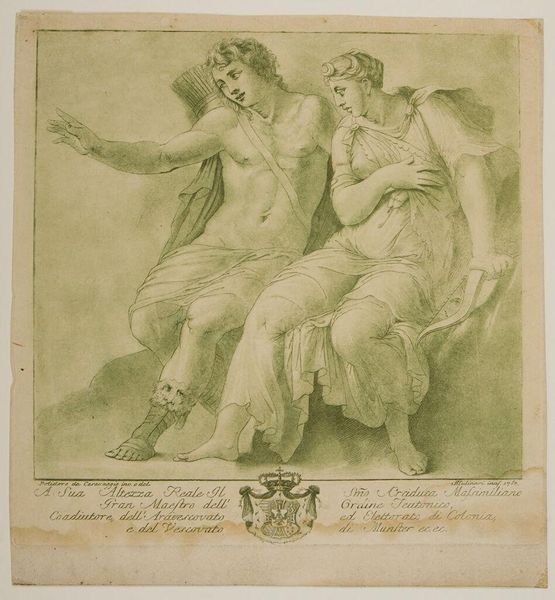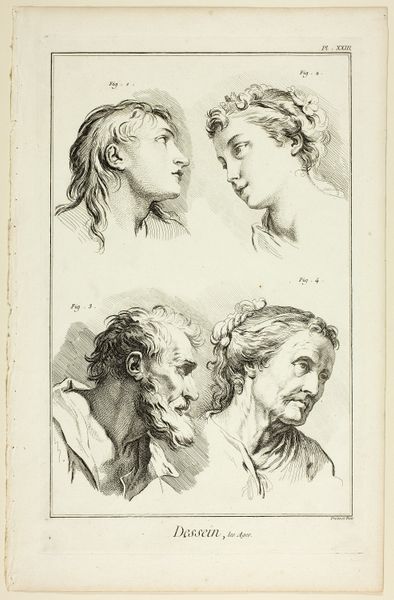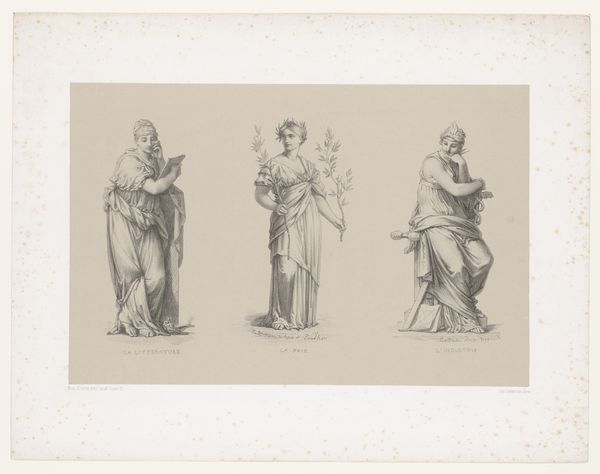
Dimensions: height 221 mm, width 310 mm
Copyright: Rijks Museum: Open Domain
Curator: Looking at "Vier engelen", an engraving attributed to Francesco Bartolozzi, possibly created in 1796, the first thing that strikes me is its tranquil stillness, even considering the activity depicted. Editor: Tranquil, yes, but there’s a subtle sense of…anticipation? All four figures seem to be gazing toward the same unseen spectacle. Their expressions are charged with expectancy. Are these angels witnessing something? Curator: The neoclassical style, with its idealised figures and flowing drapery, definitely points to a cultural interest in representing purity and grace. In historical paintings, such features were frequently employed as allegories for virtues or significant individuals within society, so perhaps that’s at work here, too. Editor: Good point. In looking closer at the gestures, there’s almost a pedagogical quality to them. The figure with the raised finger could be a teacher, guiding others on where, or how, to look. We cannot underestimate the role of engraving during the enlightenment to spread new political ideas in popular forms accessible to the public. It reminds us how revolutionary thoughts often wore the mask of classical idealism. Curator: It’s an intriguing proposition! What fascinates me further is the psychological element embedded in the collective gaze. The sense of longing in their countenances hints at more profound themes, like faith, hope, and transcendence – universal ideals in the baroque period. It presents cultural memory, linking back to prior collective understandings of what an angel is. Editor: Well, consider that Bartolozzi was working in London, a city in social and political ferment, at a time when public access to imagery was becoming more common. It reflects a shift in visual culture. Who controlled the images and who got to view them became a contested issue in the public imagination. This image in and of itself thus became a political entity. Curator: Certainly, viewing "Vier engelen," a beautiful conversation opens regarding its cultural and historical significance and visual potency as an aesthetic object. Editor: Exactly, the convergence of visual culture, accessible artistry and cultural meaning render the work powerful and provocative still.
Comments
No comments
Be the first to comment and join the conversation on the ultimate creative platform.
